2021 Dodge Challenger GT AWD Review: It's All In the Name

FAST FACTS
| Engine: | 3.6L V6 |
| Output: | 303 hp, 268 lb-ft |
| Transmission: | 8AT, AWD |
| US fuel economy (MPG): | 18/27/21 |
| CAN fuel economy (L/100KM): | 12.8/8.7/11.0 |
| Starting Price (USD): | $30,040 (inc. dest.) |
| As-Tested Price (USD): | $44,510 (inc. dest.) |
| Starting Price (CAD): | $38,260 (inc. dest.) |
| As-Tested Price (CAD): | $50,765 (inc. dest.) |
Gran Turismo. It’s more than a video game: clocking “GT” on the back of a car brings with it certain expectations.
There’s speed, of course, but grand tourers deliver it with added comfort over some hyperactive track toy. A good GT is the proverbial iron fist in a velvet glove.
That brings us to this, the 2021 Dodge Challenger GT AWD. An automotive curio, this model sends power to both axles of Dodge’s venerable pony car. The result isn’t just an all-weather option you won’t find at the Ford or Chevy dealerships, but a unique, affordable grand tourer with a distinctive American flavor.
Get a Quote on a New Dodge ChallengerA horse of a different drivetrain
This Challenger doesn’t send power to all four wheels to tame a massive Hellcat, or even a lesser V8; AWD is only available with the 3.6-liter Pentastar V6. It’s a versatile engine, powering everything from this to the Chrysler Pacifica and Ram 1500. Here it’s at its strongest, producing a healthy 303 horsepower and 268 lb-ft of torque—and it sounds pretty good, too. An eight-speed automatic transmission is the only pairing, smoothly shuffling through the ratios when cruising, and holding gears right up to redline when needed. If you’d rather be the conductor, a pair of paddle shifters sit behind the big steering wheel.
Under normal conditions, the Challenger sends its power to the rear axle only. Use the paddles however, and the Challenger’s smarty-pants system will automatically engage all-wheel drive, sending up to 38 percent of the power to the front axle. Other triggers include an outside ambient temperature under 40 degrees F (4 C), wiper activation, or entering sport mode. Activating launch control does it, too.
Should you want to keep track of the GT’s acceleration times, this tester’s Super Track Pak and Dodge Performance Pages let you do just that. You can also monitor G-forces, as well as adjust steering, traction control, and engine modes, all from the central touchscreen. A lot of digital nerdery? Yep, but it proves easy to use and entertaining.
Stellantis offers most modern driver assists bundled within various options for the Challenger. Blind spot monitoring with rear cross-traffic alert is part of the Driver Convenience Group ($1,295 / $1,095 CAD), while the Technology Group ($1,295 / $895 CAD) includes automated emergency braking, auto high beams, and adaptive cruise control. Blind spot monitoring in particular is useful in the Challenger, given its size and limited visibility.
In its natural habitat
Since this generation of Challenger debuted way back in 2008, it has never been able to match the lighter, smaller Mustang and Camaro on a twisty road. The GT AWD doesn’t even try to, instead focusing on the Challenger’s strength: utterly secure, high-speed cruising. A smooth ride is a major selling point, and even those big, pretty 20-inch alloy wheels can’t mess that up. It’s a strangely calm place to be while gobbling up highway miles. The Challenger is pretty well insulated from road- and wind noise, while the nose stretches out ahead, gently floating above the surface like the bow of a boat. Which seems appropriate, since it’s long enough to fit deck chairs.
The Challenger is still game when a corner arrives, however. An uncharacteristically warm spring meant no snow for it to play in, so on dry tarmac, the grip-to-power balance is very obviously slanted towards the former. The steering wheel has a decent amount of weight to it in Normal mode; switching to Sport tightens things up a bit without seeming too artificial. The brake pedal is progressive as well, building driver confidence in hauling this pony up when need be. The Chally is a big car though, and AWD bumps the curb weight further north to 4,078 lb (1,847 kg), so there is more body roll than you’ll find in the other pony cars.
SEE ALSO: 2021 Ford Mustang GT Convertible California Special Review: Cloudy with a Chance of (V8) ThunderChecking the AWD box does exact a penalty at the pumps. The Challenger AWD essentially splits the difference between rear-drive V6 and V8 models, coming in at 18 mpg city (12.8 L/100 km), 27 mpg (8.7 L/100 km) highway, and 21 mpg (11.0 L/100 km) combined.
Cabin feels its age
Pop open those long, heavy doors and the Challenger’s cabin is a bit of a mixed bag. The dashboard and center console design can best be described as “blobby,” and the plastic feels cheap and brittle. To the Challenger’s credit, however, the angle of all the central controls does make the cockpit feel very driver-focused. Another side-effect of the Challenger’s age: it has physical buttons for all the important climate controls. Huzzah!
Most everything else is handled from within the 8.4-inch Uconnect touchscreen. There may be newer versions of Stellantis’ UI elsewhere in the empire, but this setup remains one of the better ones on the market. It’s quick and easy to read at a glance.
The front seats are like those big armchairs you find in your parent’s basement: huge, and not the most easily adjustable thrones, but oh-so-comfortable. Optional suede inserts add an extra tactile delight, plus they’re less prone to slippage during hard cornering. The seats are heated and ventilated too—both of which are very effective, I might add.
SEE ALSO: 2021 BMW M440i xDrive Review: Baby Grand (Tourer)Rear seat room is tight, and it’s just as awkward to squeeze back there as it looks. Once adults are installed in the back though, they’ll find reasonably comfy seats, with a good amount of scalloping and the same leather-and-suede treatment as up front. The trunk will hold a decent 16.2 cubic feet (459 litres) as well.
Who’s the target audience?
Folks who want the style of a pony car with an added level of all-weather security. Admittedly, that makes it a niche prospect: if you’re in a warmer climate, there’s no dynamic benefit to picking up the AWD model. Still, it’s a USP neither Mustang nor Camaro can claim.
SEE ALSO: 2019 Chevrolet Camaro Turbo 1LE First DriveThere isn’t really anything else to directly compete with the Challenger AWD, either. If you want an AWD coupe, you’re looking to the luxury segment. Want something sportier at this $44,510 ($50,765 CAD) as-tested price point, including destination? You could easily bag a Civic Type R with money to spare.
Verdict: 2021 Dodge Challenger GT AWD Review
The Challenger AWD is far removed from the blood-spitting image the Hellcat has cultivated over the years. It’s a big softie, capable of covering great distances with ease no matter the time of year, all while keeping occupants comfortable.
Don’t think of this as a neutered pony car. Instead, the Challenger AWD is an Americana-infused grand tourer, full of style and charm. There’s nothing else quite like it.
Become an AutoGuide insider. Get the latest from the automotive world first by subscribing to our newsletter here.
LOVE IT
- Four-season muscle car
- V6 still sounds good
- Knockout looks remain
LEAVE IT
- Options drive price up fast
- No V8/AWD combo option
- Tiny rear seat despite huge size

Kyle began his automotive obsession before he even started school, courtesy of a remote control Porsche and various LEGO sets. He later studied advertising and graphic design at Humber College, which led him to writing about cars (both real and digital). He is now a proud member of the Automobile Journalists Association of Canada (AJAC), where he was the Journalist of the Year runner-up for 2021.
More by Kyle Patrick



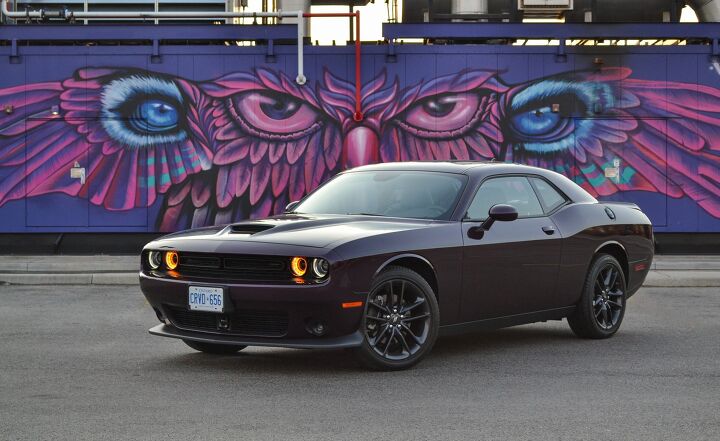



















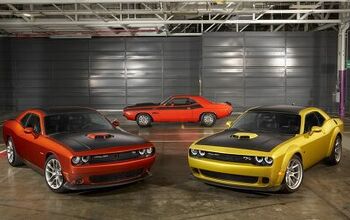

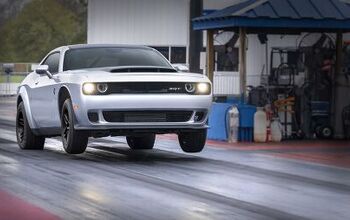
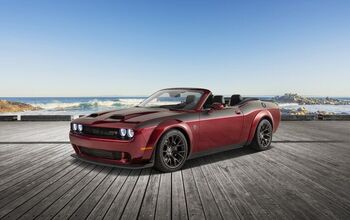
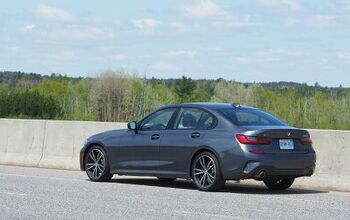












Comments
Join the conversation